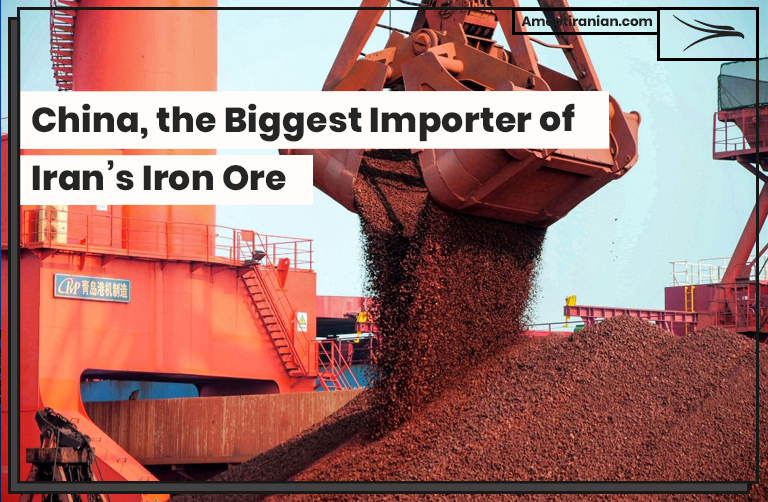Generally, ore is a rock, containing enough amount of a metal. Low grade ores have a small amount of metal while high grade ones are richer and contain a larger percentage of mineral. Iron ore, consisting 5% of Earth’s crust, is the source of iron which is primarily used to produce steel.
Steel is applied in production of automobiles, locomotives, ships, furniture, home appliances, tools, bicycles, and thousands of other products. It is worth noting that globally, steel is the most-consumed metal by both tonnage and purpose.
.

.
Sedimentary rocks are the source of most significant iron ore deposits. They are formed from chemical reactions, combining iron and oxygen in marine and fresh waters.
Hematite (Fe2O3) and magnetite (Fe3O4) are the two most important minerals in these deposits and are used to produce almost every iron and steel object that we use today.
Iran is a famous producer of iron ore with an iron ore source of 2.7 milliard MT. Iran’s name is always among the strategic suppliers of iron ore in global markets.
The high requirements of global steel companies to iron ore had encouraged Iranian iron ore companies to invest largely in production of concentrate and pellet. The major iron ore mines in Iran are located in Sangan & Khaf, Zanjan, Kerman & Sirjan, Yazd, and Sistan & Baluchestan. Hematite and magnetite are both found in these mines.
China is one of the main consumers of iron ore and therefore is a major producer of steel for international markets. Tangshan and Handan are known as the steel hubs of China. China, the producer of half of the world’s steel, produced 231 million MT of steel in the first quarter of 2019 that is the highest for any first quarter on record!
The increased investment in railways, subways and urban water and sewage systems is the main reason for higher demand of steel in China.
China’s economy grew 6.4% in the first quarter of 2019. China accounts for 50% share of production of minerals in the world including steel, aluminum, coal, copper, chrome, and iron ore.
.
China is always a reliable trade partner to Iran both in pre- and post-sanctions era and is known as the biggest buyer and importer of Iran’s iron ore.
The affordable price of Iran’s iron ore encouraged China to import around 95% of Iran’s export of iron ore. The table shows the top importers of Iran iron ore from March 21, 2018 to December 22, 2018 (10 months):
.
| Export volume by weight (KG) | Export volume in U.S Dollar | Export volume in Iranian Rail | |
| Total iron ore exports | 9,238,253,269 | 352,791,357 | 19,231,398,745,139 |
| Iron ore exports to China | 8,583,294,845 | 335,113,170 | 18,320,865,369,447 |
| Iron ore exports to Iraq | 610,161,027 | 15,951,120 | 832,686,362,023 |
| Iron ore exports to India | 1,241,404 | 139,616 | 5,864,220,230 |
.
After Australia, Brazil, South Africa, India, and Ukraine, Iran is the sixths exporter of iron ore to China. As you see on the table Iraq and India are respectively the second and third purchaser of Iran iron ore.
Amoot Iranian Trading Company located in Mashhad is a famous producer and exporter of iron ore.
Amoot Company is active in designing and equipping iron ore mines, extracting, sintering, pelletizing and exporting iron ore to various countries, mostly China. All iron ore buyers are welcomed to call Amoot experts for further details.
.

